 W
WArmorica or Aremorica is the name given in ancient times to the part of Gaul between the Seine and the Loire that includes the Brittany Peninsula, extending inland to an indeterminate point and down the Atlantic Coast.
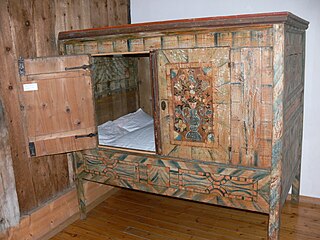 W
WA box-bed is a bed enclosed in furniture that looks like a cupboard, half-opened or not. The form originates in western European late medieval furniture.
 W
WThe Château des ducs de Bretagne is a large castle located in the city of Nantes in the Loire-Atlantique département of France; it served as the centre of the historical province of Brittany until its separation in 1956. It is located on the right bank of the Loire, which formerly fed its ditches. It was the residence of the Dukes of Brittany between the 13th and 16th centuries, subsequently becoming the Breton residence of the French Monarchy.
 W
WBreton is a Southwestern Brittonic language of the Celtic language family spoken in Brittany, modern-day France. It is the only Celtic language still in use on the European mainland.
 W
WThe Duchy of Brittany was a medieval feudal state that existed between approximately 939 and 1547. Its territory covered the northwestern peninsula of Europe, bordered by the Atlantic Ocean to the west, and the English Channel to the north. It was also less definitively bordered by the Loire River to the south, and Normandy, and other French provinces, to the east. The Duchy was established after the expulsion of Viking armies from the region around 939. The Duchy, in the 10th and 11th centuries, was politically unstable, with the dukes holding only limited power outside their own personal lands. The Duchy had mixed relationships with the neighbouring Duchy of Normandy, sometimes allying itself with Normandy, and at other times, such as the Breton-Norman War, entering into open conflict.
 W
WCamp Conlie was one of eleven military camps established by the Republican Government of National Defense under Léon Gambetta during the Franco-Prussian war. It became notable because of events which have led to its being described as a "concentration camp", in which troops from Brittany were supposedly incarcerated and persecuted. This became a significant atrocity story within Breton nationalism.
 W
WArmand Dayot,, was a French art critic, art historian and leftist politician. He was born in Paimpol, Côtes-d'Armor, Brittany. He founded the journal L'Art et les artistes and the Breton liberal organisation les Bleus de Bretagne.
 W
WThe Estates of Brittany was the States Provincial for the province of Brittany. It gathered members of the high clergy, a large number of nobles and delegates from the 42 towns and cities of Brittany. In 1788 it included nearly 1,000 nobles as opposed to fewer than 100 representatives of the other two orders.
 W
WRonan Huon, also called René Huon,, was a Breton language writer and editor. He was director and chief editor of the magazine Al Liamm for over fifty years. His work has been recognized for its contribution to the Breton language and its literature.
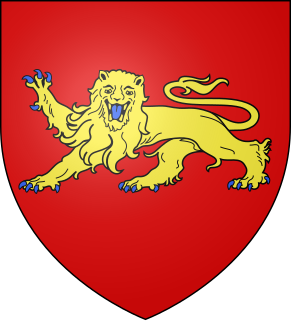 W
WThe House of Laval is a family of barons, later counts, coming from the town of Laval, located in Northwestern France, part of the province of Maine before the French Revolution. The Laval were one of the most powerful families of Maine during the Middle Ages and also had a presence in Brittany, where their prestige was similar to the one of the Rohan. The House of Laval played a significant role in Breton history and during the Hundred Years War and the French Wars of Religion. They also favored the French Renaissance in Northwestern France, building several châteaux. The last male heir died during the 17th century, and his possessions went to the House of La Trémoille.
 W
WLower Brittany denotes the parts of Brittany west of Ploërmel, where the Breton language has been traditionally spoken, and where the culture associated with this language is most prolific. The name is in distinction to Upper Brittany, the eastern part of Brittany, which is of a predominantly Romance culture.
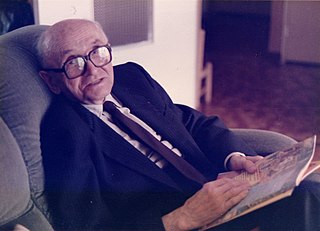 W
WJean Malo-Renault was a French librarian. Malo-Renault was born in Paris on 9 June 1900 into a family originating from Saint-Malo. He was the son of the pastellist, engraver and illustrator, Émile Malo-Renault, real name Émile Auguste Renault, and his wife Honorine Césarine Tian, herself a printmaker, etching in color.
 W
WJulien Maunoir, was a French-born Jesuit priest known as the "Apostle of Brittany". He was beatified in 1951 by Pope Pius XII and is commemorated by the Roman Catholic Church on 29 January and 2 July.
 W
WDom Michel Le Nobletz (1577–1652) was a vigorous Counter-Reformation missionary active in the west of Brittany, who was responsible for a revival of popular Catholic culture. He developed new methods of teaching, and invented distinctive painted placards — known as taolennoù – which became widely used in the area.
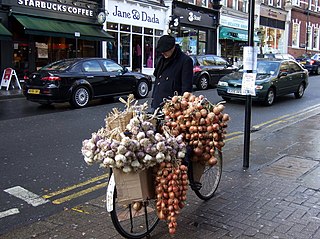 W
WOnion Johnnies were Breton farmers and agricultural labourers who travelled on bicycles selling distinctive pink onions door to door in Great Britain, and especially in Wales.
 W
WThe Parliament of Brittany was one of the parlements, a court of justice under the French Ancien Régime, with its seat at Rennes. The last building to house the Parliament still stands and now houses the Rennes Court of Appeal, the natural successor of the Parliament.
 W
WThe Pays de la Mée is a historical region of Brittany, nowadays in France which was part of the Duchy of Brittany before the French Revolution. It was then split between Loire-Atlantique and Ille-et-Vilaine department. Its capital is Châteaubriant, and the dialect traditionally spoken there is the Gallo language, which is a Romance language compared to the Breton language which is a Celtic language.
 W
WThe Pays de Retz is a historical subregion of France that currently forms part of the Loire-Atlantique department, but which previously formed part of the Duchy of Brittany.
 W
WPleumeur-Bodou Ground Station was an early ground station in north-west France, and one of the first in the world. It was the site of the first satellite transmission between the USA and Europe in the early morning of 11 July 1962, lasting 19 minutes on the satellite's seventh orbit.
 W
WThe Pontcallec conspiracy was a rebellion that arose from an anti-tax movement in Brittany between 1718 and 1720. This was at the beginning of the Régence (Regency), when France was controlled by Philippe II, Duke of Orléans during the childhood of Louis XV. Led by a small faction of the nobility of Brittany, it maintained links with the ill-defined Cellamare conspiracy, to overthrow the Regent in favour of Philip V of Spain, who was the uncle of Louis XV. Poorly organised, it failed, and four of its leaders were beheaded in Nantes. The aims of the conspirators are disputed. In the 19th and early 20th century it was portrayed as a proto-revolutionary uprising or as a Breton independence movement. More recent commentators consider its aims to have been unclear.
 W
WThis page concerns the prehistory of Brittany.
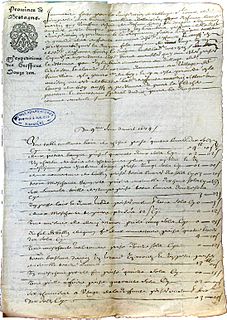 W
WThe Revolt of the papier timbré was an anti-fiscal revolt in the west of Ancien Régime France, during the reign of Louis XIV from April to September 1675. It was fiercest in Lower Brittany, where it took on an anti-lordly tone and became known as the revolt of the Bonnets rouges or revolt of the Torrebens. It was unleashed by an increase in taxes, including the papier timbré, needed to authenticate official documents.
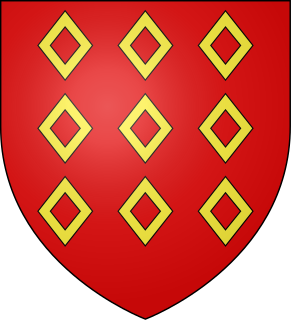 W
WThe House of Rohan is a Breton family of viscounts, later dukes and princes in the French nobility, coming from the locality of Rohan in Brittany. Their line descends from the viscounts of Porhoët and is said to trace back to the legendary Conan Meriadoc. Through the Porhoët, the Rohan are related to the Dukes of Brittany, with whom the family intermingled again after its inception. During the Middle Ages, it was one of the most powerful families in the Duchy of Brittany. They developed ties with the French and English royal houses as well, and played an important role in French and European history.
 W
WThe symbole, also called ar vuoc'h, was an object used by Francophone headmasters in public and private schools in Brittany, French Flanders, Occitania, Basque Country and North Catalonia as a means of punishment for students caught speaking Breton, Flemish, Occitan or Catalan during the 19th and 20th centuries.
 W
WThe union of Brittany and France was a critical step in the formation of modern-day France. Brittany had been a semi-independent component of the Kingdom of France since Clovis I was given authority over the Gallo-Roman domain during the 5th century. It was first recorded as a "duchy" during the rule of Nominoe in 846. Over the centuries, the fealty demonstrated by the Duchy of Brittany toward the French king depended significantly on the individuals holding the two titles, as well as the involvement of the English monarchy at that particular time. The reign of Francis II, Duke of Brittany, was at an especially crucial time, as the nobles struggled to maintain their autonomy against the increasing central authority desired by Louis XI of France. As a result of several wars, treaties, and papal decisions, Brittany was united with France through the eventual marriage of Louis XI's son Charles VIII to the heiress of Brittany, Anne in 1491. However, because of the different systems of inheritance between the two realms, the crown and the duchy were not held by the same hereditary claimant until the reign of Henry II, beginning 1547.
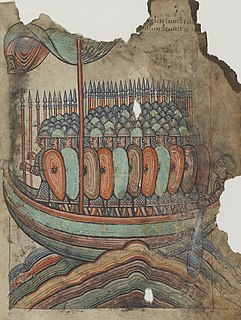 W
WViking Brittany refers to the Viking occupation of Brittany during the High Middle Ages. Throughout the 9th century, the Bretons faced threats from various flanks: they resisted full incorporation into the Frankish Carolingian Empire yet they also had to repel an emerging threat of the new duchy of Normandy on their eastern border by these Scandinavian colonists.